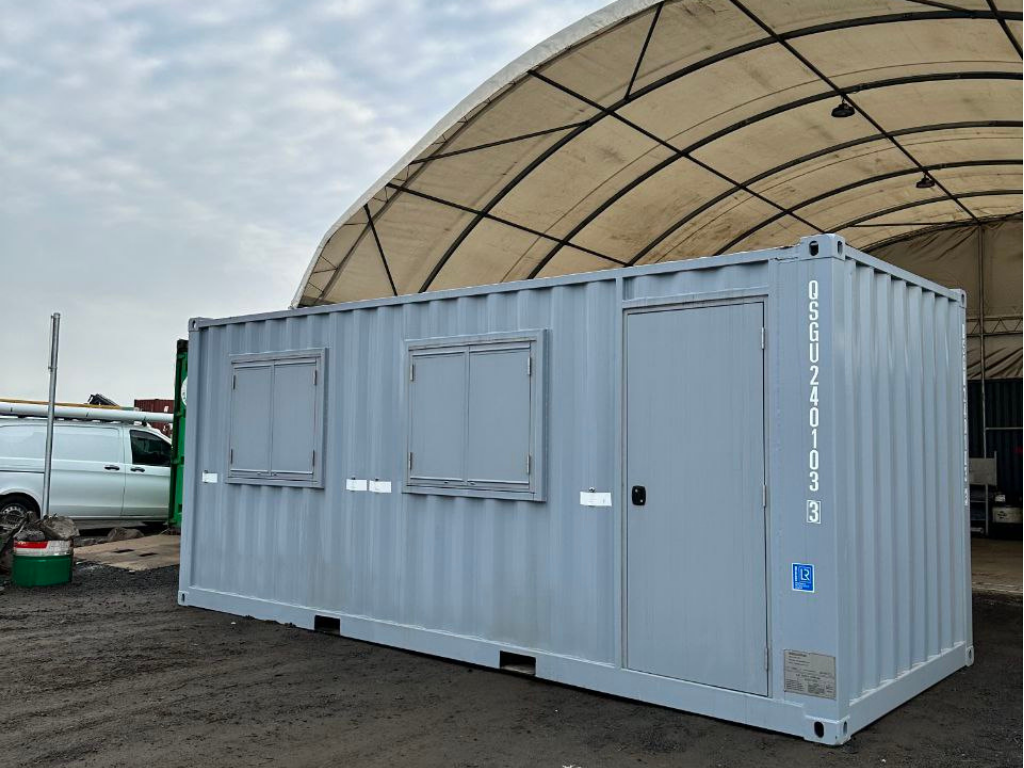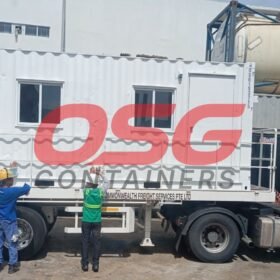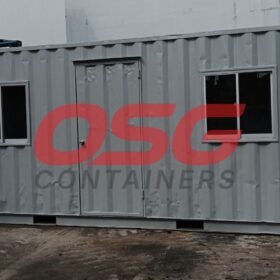Innovative Shipping Container Uses for Urban Farming and Green Spaces

Urban farming and green spaces are becoming vital components of city landscapes as the world increasingly embraces sustainability and eco-conscious living. With rising populations and limited land space in urban areas, innovative solutions are necessary to grow food and create green environments within dense city settings. One of the most creative approaches that have gained popularity in recent years is the use of shipping containers for urban farming and green spaces. These repurposed containers provide a versatile, sustainable, and cost-effective way to address the challenges of urban agriculture.
Why Shipping Containers for Urban Farming?
Shipping containers are strong, durable, and readily available in many cities due to the global shipping industry. Many containers sit unused, making them perfect candidates for repurposing into functional structures. Their modular design makes it easy to stack, arrange, and modify them into urban farms, greenhouses, or even small community gardens. They are also a sustainable option, as repurposing these containers reduces waste and limits the demand for new construction materials.
Maximizing Limited Space
In densely populated cities, land availability is a primary obstacle for urban farming. Shipping containers provide a smart solution to this issue by utilizing vertical space. A single 20-foot or 40-foot container can be converted into a vertical farm, where crops are grown in layers using hydroponic or aeroponic systems. These systems allow plants to grow without soil, using nutrient-rich water or mist instead. Not only does this save space, but it also increases crop yield and reduces water usage compared to traditional farming methods.
For example, a vertical farm inside a shipping container can grow leafy greens, herbs, and even fruits. With temperature and humidity controls, the crops can be grown year-round, irrespective of the outdoor climate. This is a game-changer for urban areas where the weather may not always be conducive to farming.
Rooftop Green Spaces with Shipping Containers
Rooftops are an underutilized resource in most urban environments. Shipping containers can be placed on rooftops to create mini farms or green spaces without taking up ground-level space. These rooftop farms can provide fresh produce to local restaurants, community markets, or even serve the building’s residents.
By incorporating solar panels or rainwater harvesting systems into the design, rooftop shipping container farms can operate sustainably, reducing the need for external energy or water sources. Rooftop container gardens also help reduce the heat island effect commonly found in cities, where concrete and asphalt surfaces absorb and retain heat, raising the surrounding temperature. By adding greenery through urban farming, these areas can become cooler, more pleasant environments for city dwellers.
Community Gardens and Educational Spaces
Shipping containers are not just for commercial or private urban farms; they can also be transformed into community gardens or educational spaces. A container-based community garden allows residents to come together, grow their own food, and learn about sustainable farming practices. Containers can house tools, seeds, and other gardening equipment, or even serve as workshops where urban gardeners can attend classes.
In schools and educational centers, shipping containers can be used to create indoor farming labs where students learn about agriculture, biology, and sustainability in a hands-on environment. These spaces can encourage future generations to embrace urban farming, contributing to food security and environmental stewardship in urban areas.
Green Spaces and Biodiversity Enhancement
Beyond farming, shipping containers can also be used to create green spaces that enhance urban biodiversity. For example, a container could be turned into a greenhouse or conservatory where native plants and trees are grown to support local wildlife. These green spaces can be designed with walking paths, seating areas, and water features, providing a relaxing escape for city residents while promoting environmental sustainability.
Shipping containers can also be part of larger urban greening projects that include green roofs, vertical gardens, and natural landscaping. These spaces not only contribute to the aesthetic appeal of urban areas but also help mitigate air pollution, improve water retention, and enhance the mental well-being of residents by providing access to nature.
Sustainable Food Production
One of the most significant benefits of shipping container farming is its ability to support sustainable food production in urban environments. By growing food closer to where it is consumed, urban container farms reduce the need for transportation, which lowers carbon emissions and reduces food waste. This localized food production system supports food security, especially in areas where access to fresh produce may be limited.
Hydroponic and aquaponic systems, commonly used in container farms, also reduce the need for pesticides and fertilizers, resulting in healthier, more eco-friendly food production methods. These systems are more efficient than traditional agriculture, using up to 90% less water and producing higher crop yields per square foot.
Conclusion
Shipping containers offer a flexible, sustainable solution for urban farming and green spaces, addressing some of the most pressing challenges faced by modern cities. From vertical farming and rooftop gardens to community spaces and biodiversity enhancement, these repurposed containers are unlocking new possibilities for sustainable living in urban environments. As more cities strive to become eco-friendly, the innovative use of shipping containers for urban farming is poised to play a significant role in shaping greener, more resilient cities for the future.
 Singapore
Singapore Australia
Australia Indonesia
Indonesia Japan
Japan Malaysia
Malaysia New Zealand
New Zealand Philippines
Philippines South Korea
South Korea Taiwan
Taiwan Thailand
Thailand VIETNAM
VIETNAM




